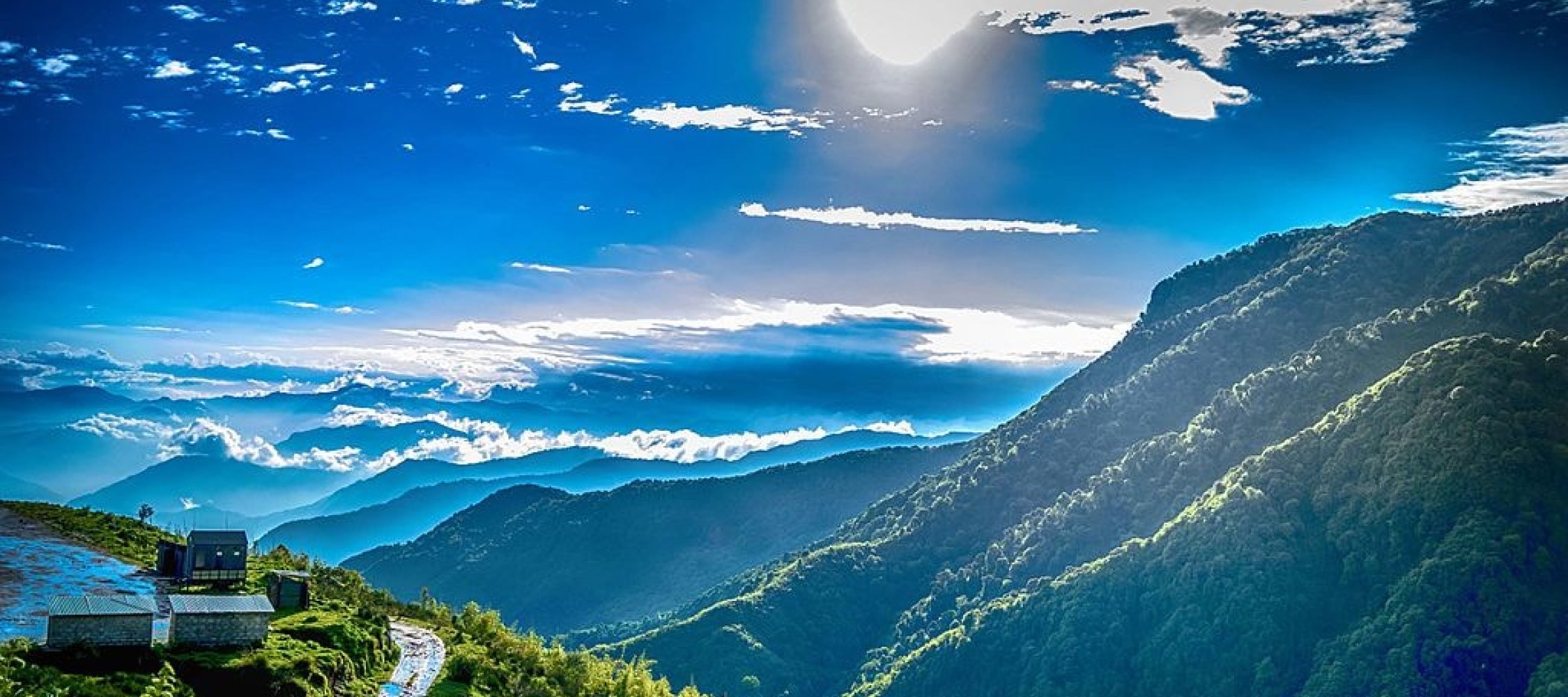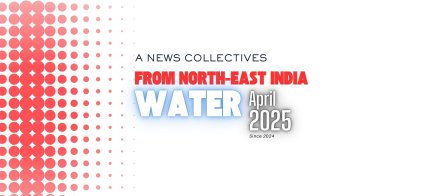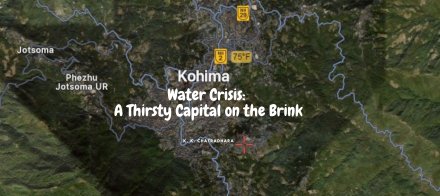 |
It is often said, “A picture is worth a thousand words!” In October 2021, in the middle of COVID-19 pandemic, a group of Sikkimese youth, between 19 and 25 years of age, signed up for a one-day online photo documentation workshop on water. The main objective of this virtual workshop was to engage the young minds with the varied perspectives on water-related issues, and help them understand how these can be expressed through images and visual composition. During the day’s orientation, they learnt the basic features of a camera, its various functions, and ways of creating stunning images that can capture, portray, and convey meaningful visual narratives – photo stories or photo essays. Guided by two highly able resource persons, they were also given a theoretical orientation on the visual documentation process, and then, they were asked to spend about a week in and around their respective places, looking at water as a subject of their creative exploration.
At the end of the week, what emerged from this brief indulgence on water was a bouquet of visual stories, which were presented before the resource persons in another scheduled online encounter. Altogether eight young people – four boys and four girls – presented their rich capture, highlighting a wide range of water-related issues – from mundane to controversial to aesthetic.
All the participants belonging to the indigenous Lepcha community were from North Sikkim district, and the majority of them hail from the Dzongu area, a place which has been a centre of people’s movement for the protection and conservation of their sacred river – Teesta. The images exhibited by the group largely captured the intricate relationship between the mountain streams and the communities living all the way down their courses. One of the brief photo essays, titled ‘uung’, meaning water in Lepcha language, described how a stream supported a host of living creatures, including the humans, along its journey downhill, while another participant tried to explain how water was viewed and used in Dzongu (a rural upland) and in Gangtok (an urban state capital) through a montage of visuals. Yet another one portrayed a bleak water scenario with looming scarcity of water, pollution, and over exploitation of water resources in the name of development and human progress. Some of them also wondered whether or not the children of the coming generation would be able to see the pristine waters of lakes and free flowing rivers! Will they be able to experience the pristine nature as we now do?
Team lead by:
Minket Lepcha
Rummit Lepcha
KungaTashi Lepcha
Participants:
Pandim Lepcha
Chu Kingchum Lepcha
Pema Yangden Lepcha
Nimkit Lepcha
Panchamit Lepcha
Chumit Lepcha
SangayChopel Lepcha
Sonam Wanhchuk Lepcha
A VISUAL JOURNEY ON WATER: UUNG
THE CONTEXT
Last year, amidst the gloomy, monotonous days of COVID-19 pandemic, a group of youth from North Sikkim embarked on an evocative visual journey, facilitated through online workshops. They immersed themselves in an intense story-telling exercise with their novice camera eyes, while exploring and reflecting on how their everyday lives are connected with water in its various forms – the ubiquitous free flowing rivulets, gurgling streams, cascading waterfalls, all eventually turning into rivers.
The group comprising youths between 19 and 25 years of age was deftly mentored by two dynamic professionals – Kunga Tashi Lepcha, a passionate photographer, and Minket Lepcha, a filmmaker and a charming storyteller, who had facilitated the two-day online workshop coordinated by Rummit Lepcha. The participants were drawn from North Sikkim, mostly in and around Dzongu, which has been at the centre of a local river protection and conservation movement for the last several years. The members of the native Lepcha community have been opposing the construction of dams for a hydropower project on a river they revere as sacred – Rongyoung to the native Lepcha community, but popularly known as Teesta.
OBJECTIVES
The objective of this online immersive workshop was (i) to excite the young minds about the deep relationship between water and human society, and their interconnectedness with all other living creatures sharing the earth; (ii) to challenge them to think about the consequences of human pride and arrogance in its ability to shape, control and modify natural environment, and its systems and processes in the name of progress and development such as building large dams on rivers and channelling waters for power generation, irrigation, accessibility of portable drinking water and industrial purposes; (iii) to help them articulate and express their thoughts, ideas and feelings in the form of art, poetry, music, image and film-making, and through this process, let their voices be heard and appreciated; (iv) to explain and make them understand the power of observation as well as the ways of expressing emotions and thoughts through photography; and finally, (v) to motivate, inspire and empower them to engage with issues and ideas that affect their lives by using this powerful visual medium. There was a need for the youth to visualise the pain of suffering that may not be expressed in words but can be captured through the participants’ eyes that grab the sight as it is a living truth for them.
THE PROCESS
Altogether 10 youths signed up for this online workshop. All the participants were required to submit a few images of their choice and explain why they had selected those images. A WhatsApp group was created to enable them to introduce themselves and interact with one another. The workshop began on 25 September 2021 with a day-long orientation for the participants on basic photography and creative storytelling skills, which were delivered in two separate sessions.
In the first session, Kunga Tashi Lepcha, the resource person for photography, explained to the participants the basic functions of a camera, composition, various modes of shooting, ISO, shutter speed, aperture, the depth of field, etc., and how to create dramatic images by cleverly manipulating all these camera features to capture a fleeting moment, or emotions and thoughts. He also showed how one could use photography to document different aspects of nature and human society, and its culture in various forms of visual texts – photo story and photo essay.
He concluded with a quote by celebrated photographer W. Eugene Smith in his photo story, ‘Country Doctor’, as saying: “I’ve never made any picture, good or bad, without paying for it in emotional turmoil”. That is to say that photography is a rollercoaster of emotions trapped inside a single frame used by a beholder that has his/ her own way of beholding it, differing from one viewer to another.
At the end of the day’s session, the participants were given a week to capture their emotions and ideas in images of space, objects, and moments associated with water and discover their interconnection. A separate date was fixed for the presentation of their visual works and texts, and for wrapping up the online workshop.
On 4 October 2021, eight out of 10 participants (four boys and four girls) presented their visual stories before the two resource persons, who reviewed their works and appreciated their efforts in this collaborative visual narrative on water. They said the participants were expressive in their emotions and thoughts while attempting to document the inter-linkages of humans and other living species with water, as an existential experience. This was a perfect opportunity for the residents/ participants who belong to that place to visualise their own lands and represent to the larger cohort of the Northeast who have similar issues.
THE OUTCOME
Their photo narratives amply suggest how infinitely beautiful the connection they have depicted in their journey of uncovering the bond with the river entity. They also raise a few pertinent questions:
Will the coming generation be able to play by these lakes as the children do now? Will they be able to experience the pristine nature as we now do?
Pandim Lepcha
Chu Kingchum Lepcha
Pema Yangden Lepcha
Nimkit Lepcha
Panchamit Lepcha
Chumit Lepcha
SangayChopel Lepcha
Sonam Wanhchuk Lepcha


